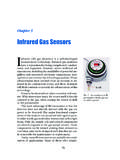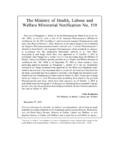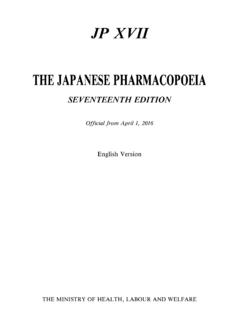Transcription of Fundamentals of UV-Visible Spectroscopy (5965-5123E)
1 : Page i Friday, December 20, 1996 4:12 PM. Contents Chapter 1 Principles and applications of UV-Visible Spectroscopy Basic 10. The electromagnetic 10. Wavelength and frequency .. 11. Origin of UV-Visible spectra .. 11. Transmittance and absorbance .. 14. Derivative 14. Obtaining derivative spectra .. 16. Applications .. 17. Signal-to-noise .. 17. Instrumental considerations .. 18. Qualitative 18. Identification spectra and structure .. 18. Confirmation of identity .. 19. 21. Other qualitative information .. 22. Protein and nucleic acid melting 22. Enzyme activity .. 23. Instrumental 24. Quantitative 24. Beer's 24. Sample 28. Multicomponent analysis .. 29. Principle of additivity.
2 29. Simple simultaneous equations 29. Least squares 32. Other 34. Sample 34. Instrumental requirements .. 34. Indirect quantification .. 35. Chemical 35. Spectrophotometric titrations .. 35. Enzyme kinetic 36. Chapter 2 Instrumentation Instrumental 38. 38. 39. Dispersion devices .. 40. i : Page ii Friday, December 20, 1996 4:12 PM. Contents Detectors .. 41. Optics .. 43. The conventional spectrophotometer .. 44. The diode array 45. 47. Single-beam 47. Dual-beam design .. 48. Split-beam design .. 50. Dual-wavelength design .. 51. Measuring a spectrum .. 51. Key instrumental parameters .. 52. Spectral resolution .. 52. Wavelength accuracy and precision .. 55.
3 Photometric accuracy and 57. Stray 57. Noise .. 58. Linear dynamic range .. 59. Drift .. 61. Chapter 3 Sample handling and measurement Liquid samples .. 64. 64. Material .. 64. Cell types .. 65. Sources of 66. Care of cells .. 67. Choice of 67. Effect of solvent, concentration, pH, and 68. Solid samples .. 70. No reference .. 70. Refractive index .. 71. Sample geometry .. 71. Weak absorbance .. 72. Changing slit width .. 72. Time 73. Wavelength averaging .. 73. Strong absorbance .. 74. Interference .. 75. Types of 75. Other absorbing compounds .. 76. Scattering .. 76. Correction 77. 78. Multicomponent analysis .. 78. ii : Page iii Friday, December 20, 1996 4:12 PM.
4 Contents Background 79. Internal 80. Three-point correction .. 80. Derivative 81. Photochemical 85. Fluorescence .. 85. Sample decomposition .. 86. Chapter 4 Method development and validation Method development .. 88. Linearity .. 89. 93. Precision .. 94. 95. 97. 97. 99. Instrumental requirements .. 100. Method validation .. 100. Chapter 5 Routine operation Instrument performance 102. Test 102. Wavelength accuracy and precision .. 103. Photometric accuracy and precision .. 104. Stray 104. Resolution .. 105. Noise .. 105. Baseline flatness .. 106. Stability .. 106. 106. Standards .. 107. Emission standards .. 107. Solid absorption standards .. 107. Liquid absorption 108.
5 Regulatory requirements .. 110. GLP/GMP .. 110. European Pharmacopoeia .. 110. United States Pharmacopoeia .. 111. American Standard Testing Methods .. 113. Recommendations .. 115. Instrument self-test .. 119. iii : Page iv Friday, December 20, 1996 4:12 PM. Contents System 120. Proper 120. Electronic storage .. 121. Standard operating procedures .. 121. Collateral data .. 121. Confirmation wavelengths .. 122. Full spectra .. 122. 124. Appendix A Accuracy and precision Definition of 126. Appendix B Characteristics of diode array spectrophotometers Advantages of diode array Spectroscopy .. 128. Fast spectral acquisition .. 128. Simultaneous multiwavelength measurement.
6 129. Wavelength 130. 131. Measurement statistics .. 131. Ruggedness and reliability .. 131. Open sample area .. 132. Disadvantages of diode array Spectroscopy .. 132. 132. Stray light .. 133. Sample decomposition .. 133. Complexity .. 134. Errors in measuring fluorescent 134. iv : Page v Friday, December 20, 1996 4:12 PM. Fundamentals of UV-Visible Spectroscopy A Primer Tony Owen : Page vi Friday, December 20, 1996 4:12 PM. Copyright Hewlett-Packard Company, 1996. All rights reserved. Reproduction, adaption, or translation without prior written permission is prohibited, except as allowed under the copyright laws. The information contained in this primer is subject to change without notice.
7 Printed in Germany 09/96. Hewlett-Packard publication number 12-5965-5123E. : Page vii Friday, December 20, 1996 4:12 PM. Preface Preface In 1988 we published a primer entitled The Diode-Array Advantage in UV/ visible Spectroscopy . At the time, although diode array spectrophotometers had been on the market since 1979, their characteristics and their advantages compared with conventional scanning spectrophotometers were not well-understood. We sought to rectify the situation. The primer was very well-received, and many thousands of copies have been distributed. Much has changed in the years since the first primer, and we felt this was an appropriate time to produce a new primer.
8 Computers are used increasingly to evaluate data; Good Laboratory Practice has grown in importance; and a new generation of diode array spectrophotometers is characterized by much improved performance. With this primer, our objective is to review all aspects of UV-Visible Spectroscopy that play a role in obtaining the best results. Microprocessor and/or computer control has taken much of the drudgery out of data processing and has improved productivity. As instrument manufacturers, we would like to believe that analytical instruments are now easier to operate. Despite these advances, a good knowledge of the basics of UV-Visible Spectroscopy , of the instrumental limitations, and of the pitfalls of sample handling and sample chemistry remains essential for good results.
9 With this primer, we also want to show that the conventional single measurement at a single wavelength approach to obtaining results is insufficient for assuring optimum results. Multiple measurements at multiple wavelengths or (preferably). full spectra yield the best accuracy and precision of results and provide the information necessary to detect erroneous results. I would like to take this opportunity to thank my colleagues, too numerous to mention by name, at Hewlett-Packard from whom I. have learned so much about UV-Visible Spectroscopy over the years. vii : Page viii Friday, December 20, 1996 4:12 PM. viii : Page 9 Friday, December 20, 1996 4:12 PM.
10 Chapter 1. Chapter 1 Principles and applications of UV-Visible Spectroscopy 9. : Page 10 Friday, December 20, 1996 4:12 PM. Principles and applications of UV-Visible Spectroscopy This chapter outlines the basic theories and principles of UV-Visible Spectroscopy . These provide valuable insight into the uses and limitations of this technique for chemical analysis. The primary applications of UV-Visible Spectroscopy are also briefly reviewed. Basic principles The electromagnetic Ultraviolet (UV) and visible radiation comprise only a small part spectrum of the electromagnetic spectrum, which includes such other forms of radiation as radio, infrared (IR), cosmic, and X rays (see Figure 1).






